DS3231 RTC Module Features
DS3231 real time clock module features high accuracy and low power consumption. This RTC module maintains seconds, minutes, hours, day, date, month, and year information. In this module, the date is set based on whether the month is 29, 30 or 31 days, and also whether it is leap year or not. This module can be used in 12-hour and 24-hour formats.
Note
The DS3231 module is available in two different types on the market. There is actually no difference between the two types in terms of functionality and operation, and only the appearance and pin assignments are different.
DS3231 RTC Module Pinout
Two types of DS3231 RTC modules are available in the market. One of the types of the DS3231 RTC module has 6 pins:
- INT: interrupt output
- COT: Clock output
- SCL: Serial Clock Input for I2C protocol
- SDA: Serial Data Input / Output for I2C protocol
- VCC: Module power supply – 5V
- GND: Ground
You can see the pinout of this module in the image below.
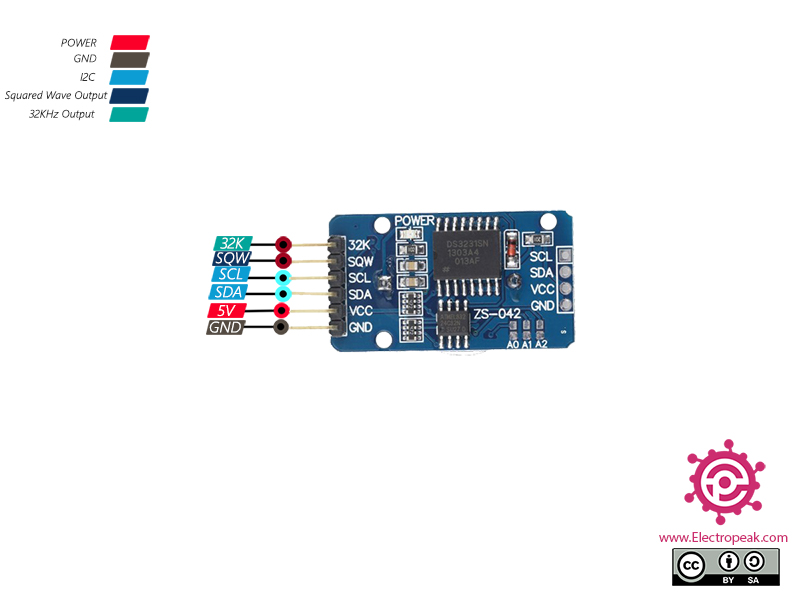
The other type of the DS3231 module has 5 pins:
- VCC: Module power supply – 5 V
- SCL: Serial Clock Input for I2C protocol
- SDA: Serial Data Input / Output for I2C protocol
- NC: Not used
- GND: Ground
You can see the pinout of this module in the image below.
Required Materials
Hardware Components
Software Apps
Interfacing DS3231 RTC Module with Arduino
Step 1: Circuit
The following circuits show how you should connect Arduino to DS3231 module. Connect wires accordingly.
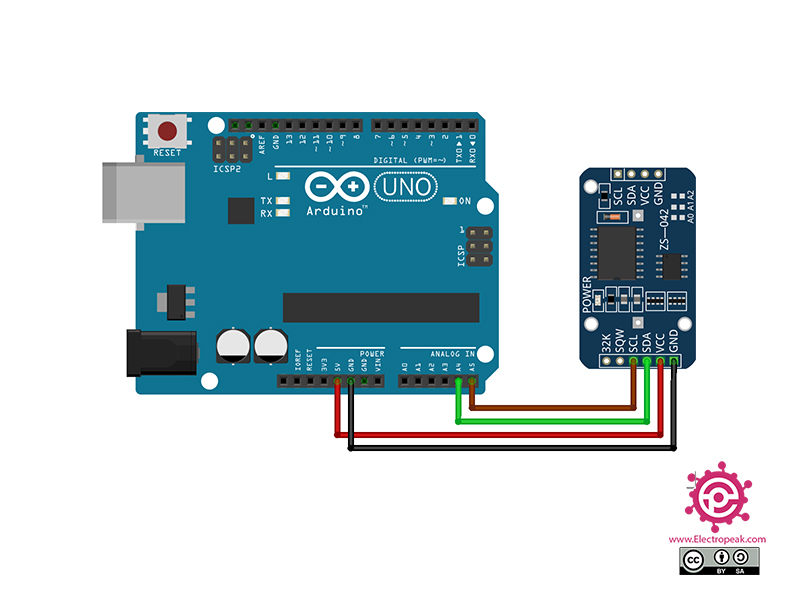
Step 2: Installing Library
From this part, everything is the same for both types of the DS3231 RTC module. Download the DS3231_library from the link below. Then, go to “Include Library” and install it.
Note
If you need more help with installing a library on Arduino, read this tutorial: How to Install an Arduino Library
Step 3: Code
Upload the following code to your Arduino. Then, open Serial Monitor.
/*
modified on Nov 22, 2020
Modified by MehranMaleki from Arduino Examples
Home
*/
#include <Wire.h>
#include <ds3231.h>
struct ts t;
void setup() {
Serial.begin(9600);
Wire.begin();
DS3231_init(DS3231_CONTROL_INTCN);
/*----------------------------------------------------------------------------
In order to synchronise your clock module, insert timetable values below !
----------------------------------------------------------------------------*/
t.hour=3;
t.min=0;
t.sec=0;
t.mday=14;
t.mon=11;
t.year=2020;
DS3231_set(t);
}
void loop() {
DS3231_get(&t);
Serial.print("Date : ");
Serial.print(t.mday);
Serial.print("/");
Serial.print(t.mon);
Serial.print("/");
Serial.print(t.year);
Serial.print("\t Hour : ");
Serial.print(t.hour);
Serial.print(":");
Serial.print(t.min);
Serial.print(".");
Serial.println(t.sec);
delay(1000);
}
In this code, first, the time information including second, minute, day, month, year and century are set as the starting point and the module starts working and is updated every second. Then, every second, the information is received from the module and displayed in the Serial Monitor.
The output is as follows:
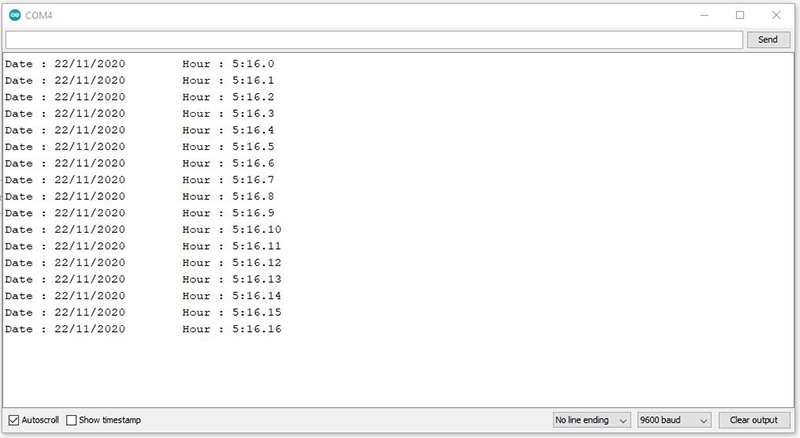
With these steps, you can easily interface the DS3231 RTC module with Arduino and utilize its precise timekeeping capabilities for your projects.

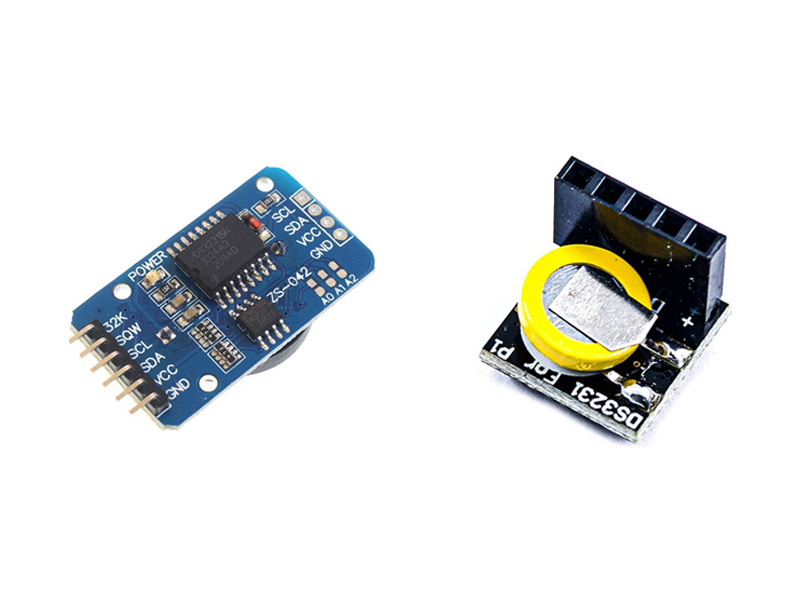
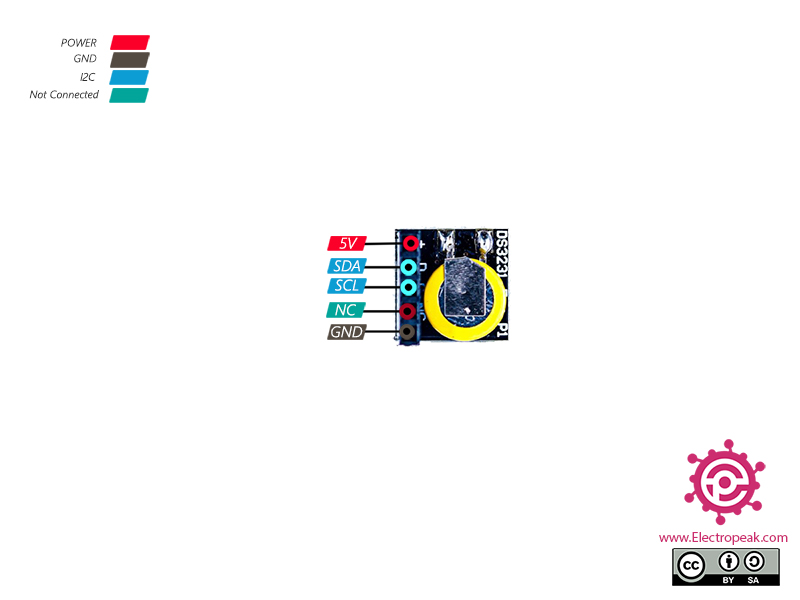

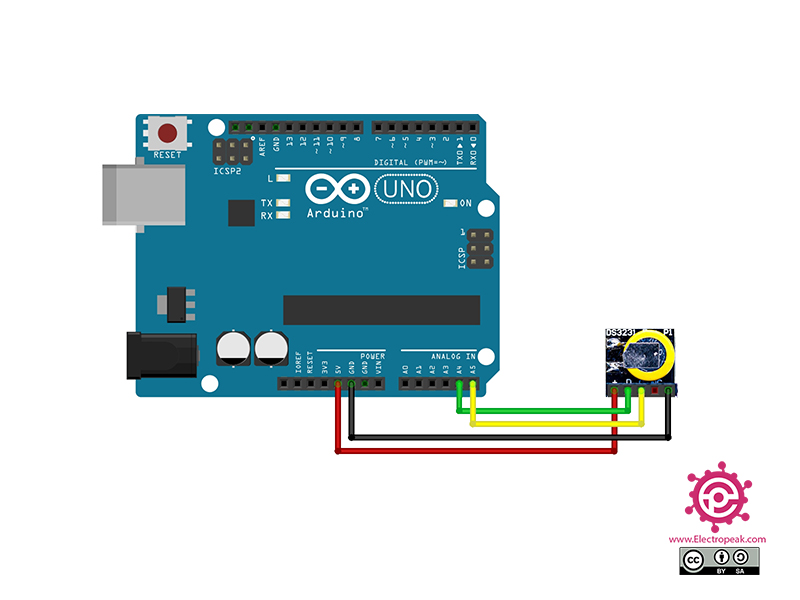
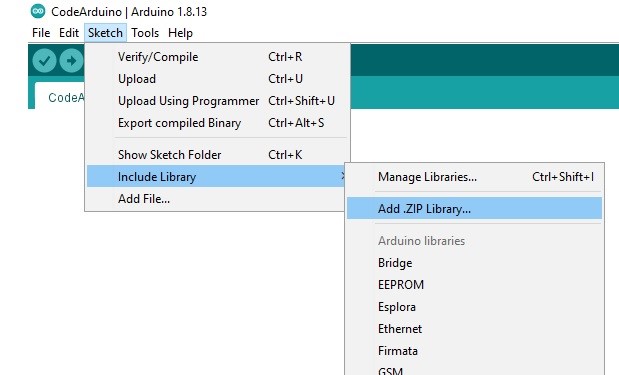

Comments (2)
Having no luck with my Pfc8563 modules I decided to try the DS3231 module instead. Using the code and library provided above I got the following output:
00:50:31.427 -> Date : 14/11/2020 Hour : 3:0.0
00:50:33.427 -> Date : 14/11/2020 Hour : 3:0.0
00:50:35.416 -> Date : 14/11/2020 Hour : 3:0.0
00:50:37.416 -> Date : 14/11/2020 Hour : 3:0.0
00:50:39.446 -> Date : 14/11/2020 Hour : 3:0.0
As you can see the seconds are not incrementing. I also noticed that the module runs extremely hot, too hot to touch.
Any ideas?
Thanks
Lockie
Hi dear
maybe any short circuit happened
please check your connections like input supply pin with multimeter, to be sure don’t have short pins
whats your supply adaptor? how much input voltage?